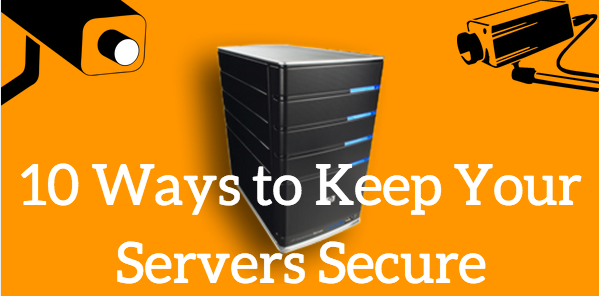There are many ways businesses and individuals use servers. In most of these cases, this involves storing a tremendous amount of data – some of which is probably not intended for public knowledge. Many servers also power business websites, email platforms and even applications. Regardless of how a server is being used, unauthorized access to that server is no laughing matter. That’s why we’ve put together this list of 10 ways to help keep your server safe.
10 Considerations for Keeping Your Server Secure
- Physical Security: While a server’s physical security may not be the first thing that comes to mind, it is a critical issue. Any unauthorized party gaining access to a machine, or even a hard drive, is a serious risk. One way to help minimize this risk, even in the event of an intrusion, is by configuring the system to only boot from an internal hard drive. Naturally, a strong password is always a good idea as well.
- Encrypt Drives: Encrypting drives keeps files secure. Servers using a Trusted Platform Module (TPM) and drives that have been encrypted make it easy for server administrators to access and maintain the appropriate information without jeopardizing server security.
- Remote Access: Logging into a server locally is no longer the norm. Many webmasters and systems administrators use servers all around the globe, making remote access a common practice. Restricting remote access by IP, using security tokens and using private connections are ways to log in via remote access without putting a server’s security into harm’s way.
- Verify Software: One of the greatest threats to server security is out-of-date software. One of the primary reasons software providers update products as frequently as they do is to account for potential security threats. Making sure that all software is up-to-date is a critical step in ensuring that your servers are secure. It’s also important to make sure that a server is not using any unnecessary software. The more programs the server is running, the more difficult it is to maintain the server – and the more likely a server administrator is to miss a software update.
- Use Linux: Linux servers have been historically more secure than their Windows counterparts. Regardless of which operating system a server uses, though, it is important that webmasters and systems administrators are always knowledgeable of the most recent potential threats to their servers. Linux, an open-source platform with a huge global community, tends to offer quicker responses to any potential viruses or attacks because there are so many skilled programmers working together to develop an appropriate security measure.
- Establish Firewalls: Firewalls serve as distinct barriers that prevent the general public from accessing a server. They serve as guards monitoring both incoming and outgoing traffic to/from a server and determine if the data that traffic requests is appropriate. Users determine what data the firewall should deem appropriate during the initial configuration process.
- Separate Environments: Testing work on a production server is a huge risk. Developers frequently work with sensitive data during development and testing. If a mistake is made, this sensitive information could accidentally become accessible to the public. This is obviously a tremendous threat to server security – and potentially much more, depending on the nature of the compromised data.
- Permissions & Privileges: Limiting the number of people who have easy access to a server reduces that server’s risk. Generally speaking, the fewer users with the lowest amount of permissions the better. While it is true that certain individuals will need access to certain data, it is possible to provide that necessary data and nothing more.
- Regular Audits: Server logs should be monitored and regularly reviewed. Strange entries in these logs can be great indicators of a potential threat. Detecting this early on enables a system administrator to properly combat any pending attacks.
- Use Scanners: Scanners make it easy to automate server monitoring. These tools launch periodic security checks and can also provide updates on performance as well. A popular open-source solution is using Nagios in conjunction with Observium. In this instance, Nagios provides the actual monitoring service and Observium allows a webmaster to view live statistics of what is being monitored.
The Value of Managed Hosting
While each of these considerations may seem simple enough, many webmasters quickly find that server management – particularly server security – is a hefty task that quickly becomes overwhelming. At HostandStore, we pride ourselves on having one of the industry’s leading systems administration teams. If server security and management has become more than you can handle, it may be time to consider relinquishing these responsibilities to a professional. You can reach us via LiveChat on our site (when available) or through our 24/7 ticketing system.

